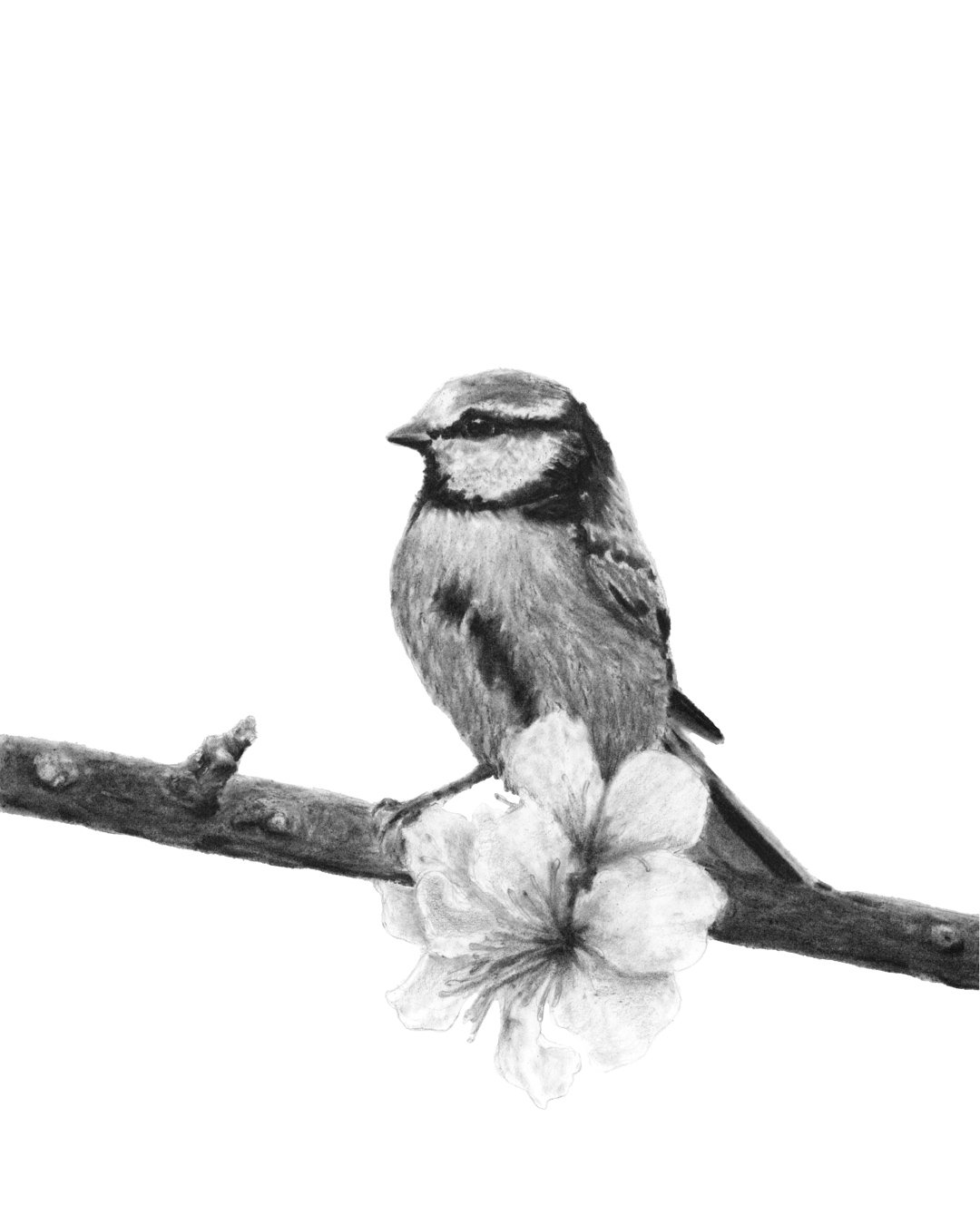IN THIS LESSON
Objective: In this lesson, you will learn and practice techniques to capture the complexity of organic plant forms. These exercises will help you understand the intricate shapes, textures, and details of plants, enabling you to create more realistic and expressive drawings.
Materials Needed:
Drawing paper (preferably A4 size or larger)
Graphite pencils (HB, 2B, 4B)
Erasers
Blending tools (tortillons, blending stumps, or your finger)
Reference images or real plants and flowers
Magnifying glass (optional, for studying fine details)
Lesson Duration: 1 hour and 30 minutes
Introduction (10 minutes):
Discussion: Let’s start with a brief discussion on the importance of capturing the complexity of organic plant forms.
Explain how focusing on the intricate details and textures of plants can lead to more realistic and dynamic drawings.
Show examples of plant sketches that effectively capture their complexity and discuss the techniques used.
Objective: Here’s what we’ll aim to achieve today.
Develop your ability to observe and accurately capture the intricate forms and textures of plants.
Practice exercises that focus on structure, detail, and texture.
Warm-Up Exercise (10 minutes):
Quick Sketches: Grab your paper and pencils.
Choose a reference image or real plant.
Spend 1-2 minutes on each sketch, focusing on capturing the overall shape and flow of the plant.
Do several quick sketches to warm up and get a feel for the plant’s form and movement.
Main Activity (60 minutes):
Exercise 1: Structural Analysis (20 minutes):
Setup: Select a plant or flower as your subject. Observe the overall structure and the way different parts are connected.
Notice the main stem, branches, leaves, and any flowers or buds.
Drawing: Start by lightly sketching the basic structure using simple shapes (circles, ovals, lines) to represent the main components.
Focus on getting the proportions and placement correct before adding details.
Goal: Understand the underlying structure of the plant and how different parts are arranged.
Exercise 2: Detailed Outlines (20 minutes):
Setup: Use the basic structure from the previous exercise as a foundation.
Observe the contours of the leaves, petals, and stems closely.
Drawing: Refine your initial sketch by adding detailed outlines. Pay attention to the edges, curves, and overlaps.
Use light, precise lines to capture the intricate shapes.
Goal: Develop a more detailed and accurate representation of the plant’s form.
Exercise 3: Texture and Shading (20 minutes):
Setup: Observe the surface textures of the plant. Notice any veins, roughness, or smooth areas on the leaves and petals.
Identify the light source and how it creates shadows and highlights on the plant.
Drawing: Add texture and shading to your drawing. Use hatching, cross-hatching, stippling, and blending techniques to represent different textures.
Gradually build up the shading to create depth and dimension.
Goal: Practice capturing the textures and details that define the plant’s surface.
Extra Credit Exercise (10 minutes):
Close-Up Study:
Setup: Choose a small section of the plant, such as a single leaf or a flower petal.
Use a magnifying glass if necessary to study the fine details.
Drawing: Create a close-up drawing focusing on the intricate details and textures of the chosen section.
Use fine lines and careful shading to capture the complexity.
Goal: Enhance your ability to observe and render fine details accurately.
Conclusion and Review (10 minutes):
Group Discussion:
Share your drawings and discuss what you learned from each exercise.
Talk about which aspects of capturing the complexity of organic plant forms you found most challenging and which you enjoyed the most.
Homework/Extension:
Practice drawing different plants at home using the techniques learned today.
Experiment with capturing the complexity of plants in various stages of growth and from different angles.
Assessment:
I’ll evaluate you based on your participation, effort, and your ability to capture the complexity of organic plant forms in your drawings.
I’ll provide feedback on your structural analysis, detailed outlines, and how well you rendered textures and shading.
Tips for Success:
Use References: Work from life whenever possible, but also use high-quality photographs to study details and capture different angles.
Take Your Time: Capturing the complexity of plant forms requires patience and careful observation.
Focus on Details: Pay attention to the small details that make each plant unique, such as the texture of leaves and the patterns on petals.
Experiment with Techniques: Try different drawing techniques to see what works best for you. Mixing techniques can add variety and richness to your drawings.
Observe Light and Shadow: Study how light affects the appearance of plants. Proper shading is crucial for conveying depth and realism.
By focusing on these tips and regularly practicing these exercises, you'll develop the ability to capture the complexity of organic plant forms accurately and expressively. This skill will enhance your overall artistic abilities and deepen your appreciation for the natural world.

